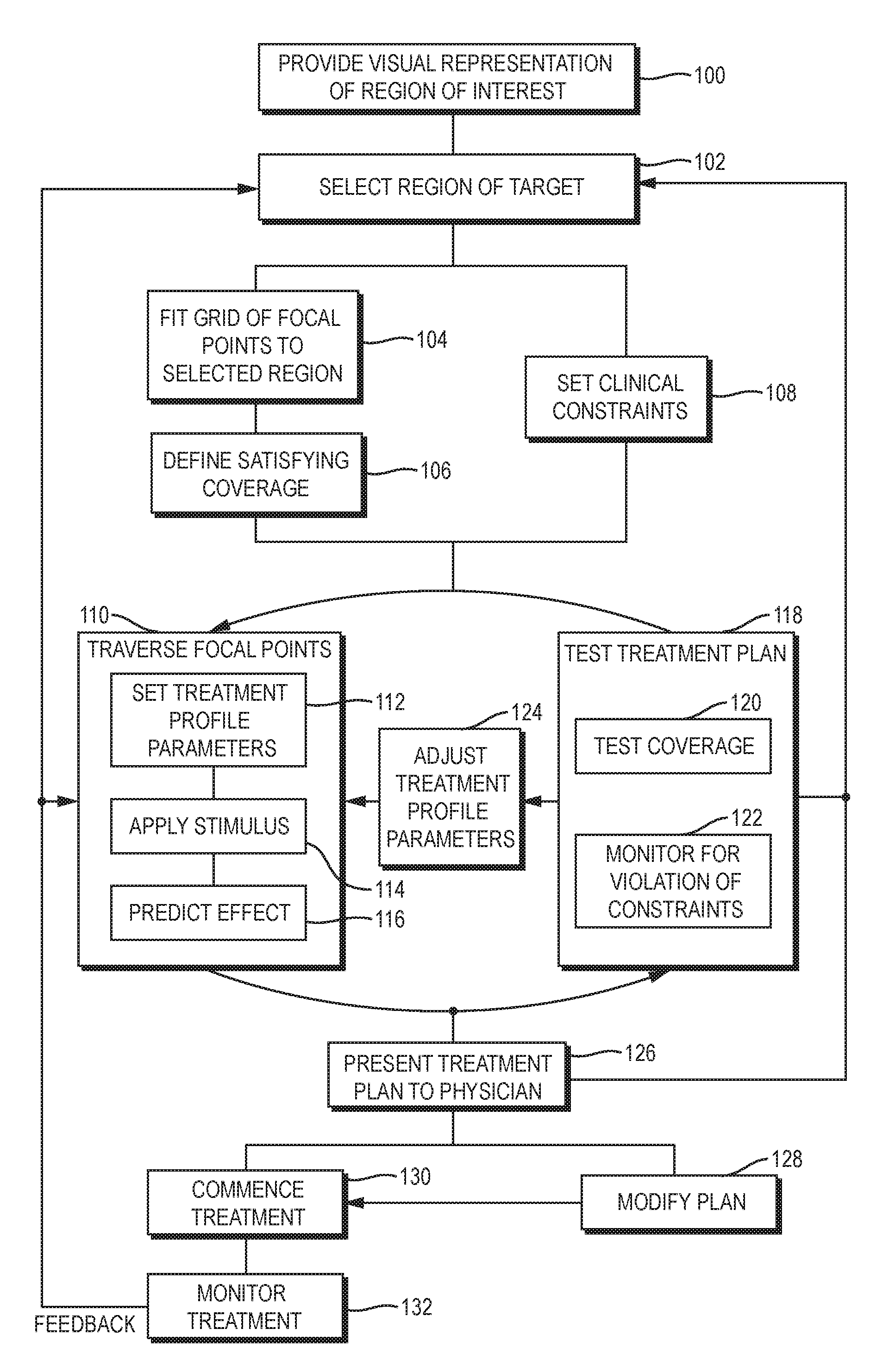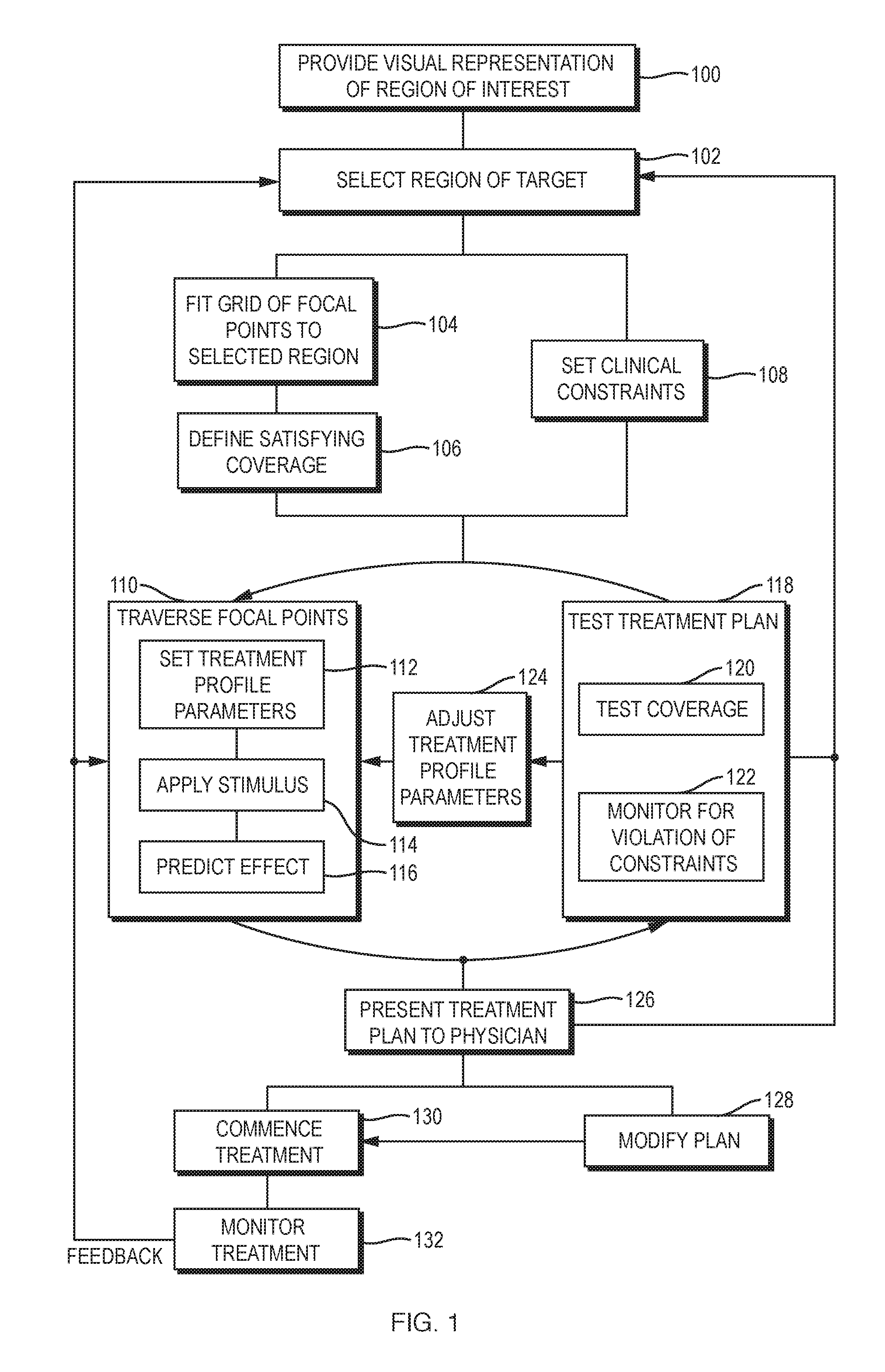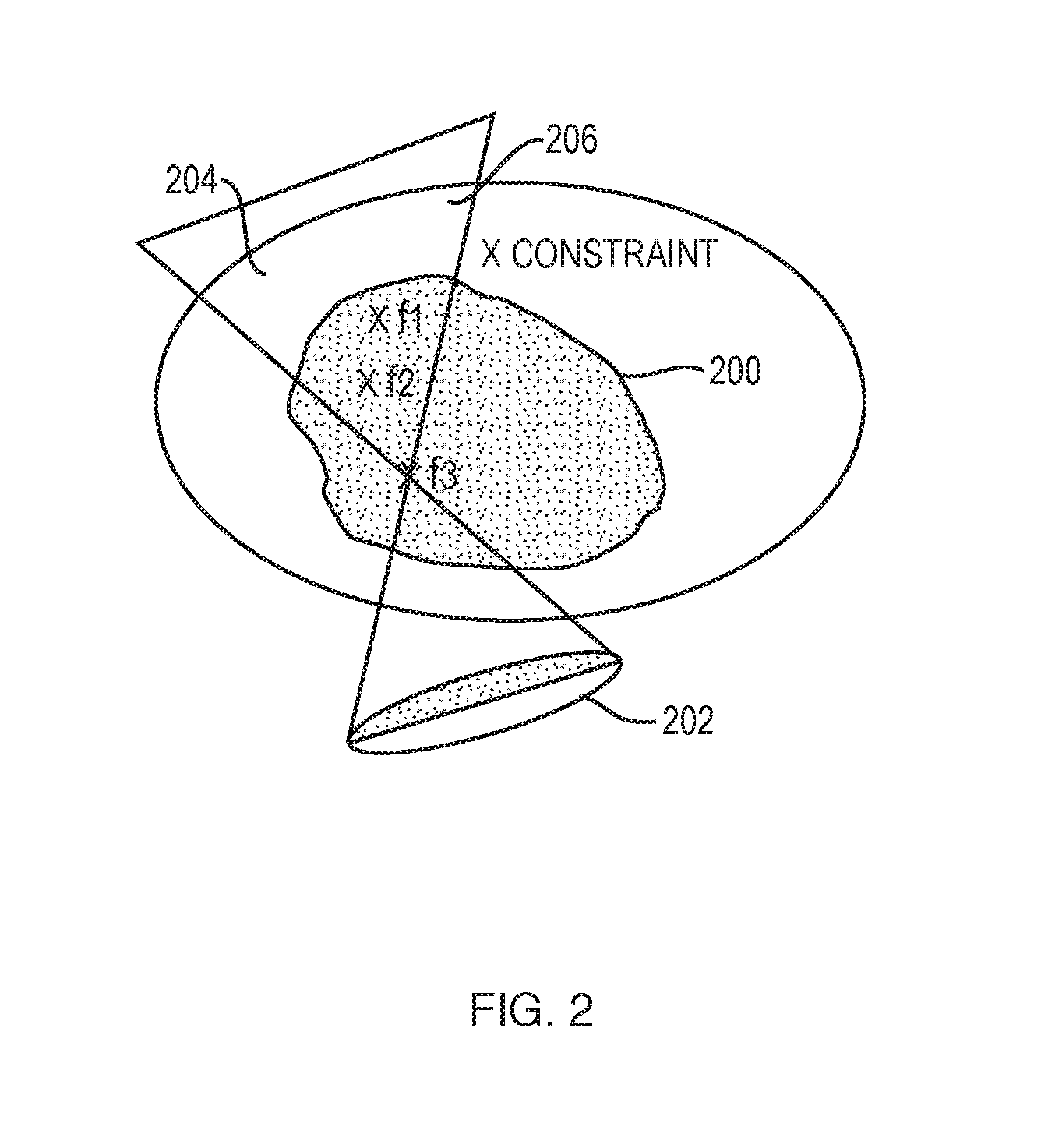Simulation-based focused-ultrasound treatment planning
a focused ultrasound and treatment planning technology, applied in the field of simulation-based focused ultrasound treatment planning, can solve the problems of aborting treatment planning as unsuccessful, energy or intensity of sonication applied, etc., and achieve the effect of modifying the treatment plan
- Summary
- Abstract
- Description
- Claims
- Application Information
AI Technical Summary
Benefits of technology
Problems solved by technology
Method used
Image
Examples
Embodiment Construction
[0023]Various embodiments hereof provide methods for planning focused-ultrasound treatment of one or more target tissues within a tissue region that may also include non-target tissues. Treatment planning often has the dual goals of achieving the desired treatment effect in the target tissue(s) while at the same time avoiding damage to non-target tissues. FIG. 1 illustrates, in the form of a flow chart, an exemplary treatment-planning method in accordance with various embodiments. As shown, treatment planning may begin, in step 100, with providing a visual representation of the patient's anatomy within a region of interest to the treating physician. The visual representation may, for example, include or consist of a series of image slices acquired with MRI, computed tomography (CT), ultrasound, or any other medical imaging modality, or a three-dimensional graphical model created based on such images. In step 102, the physician identifies a target, or portion of a target, within the ...
PUM
 Login to View More
Login to View More Abstract
Description
Claims
Application Information
 Login to View More
Login to View More - R&D
- Intellectual Property
- Life Sciences
- Materials
- Tech Scout
- Unparalleled Data Quality
- Higher Quality Content
- 60% Fewer Hallucinations
Browse by: Latest US Patents, China's latest patents, Technical Efficacy Thesaurus, Application Domain, Technology Topic, Popular Technical Reports.
© 2025 PatSnap. All rights reserved.Legal|Privacy policy|Modern Slavery Act Transparency Statement|Sitemap|About US| Contact US: help@patsnap.com



